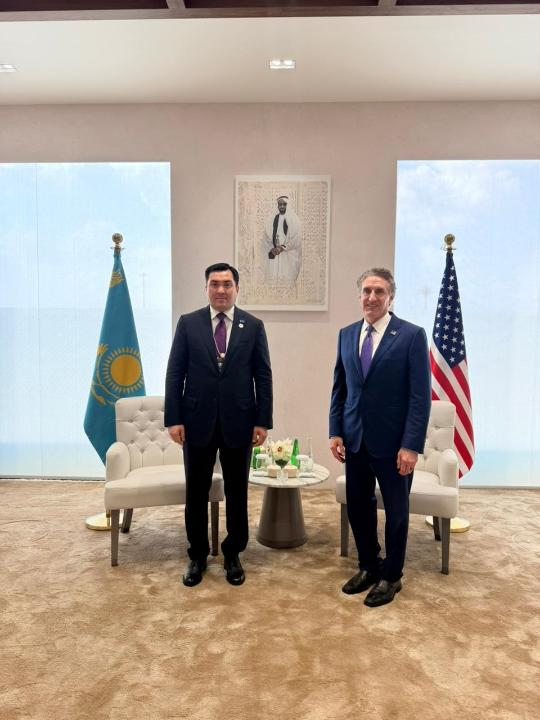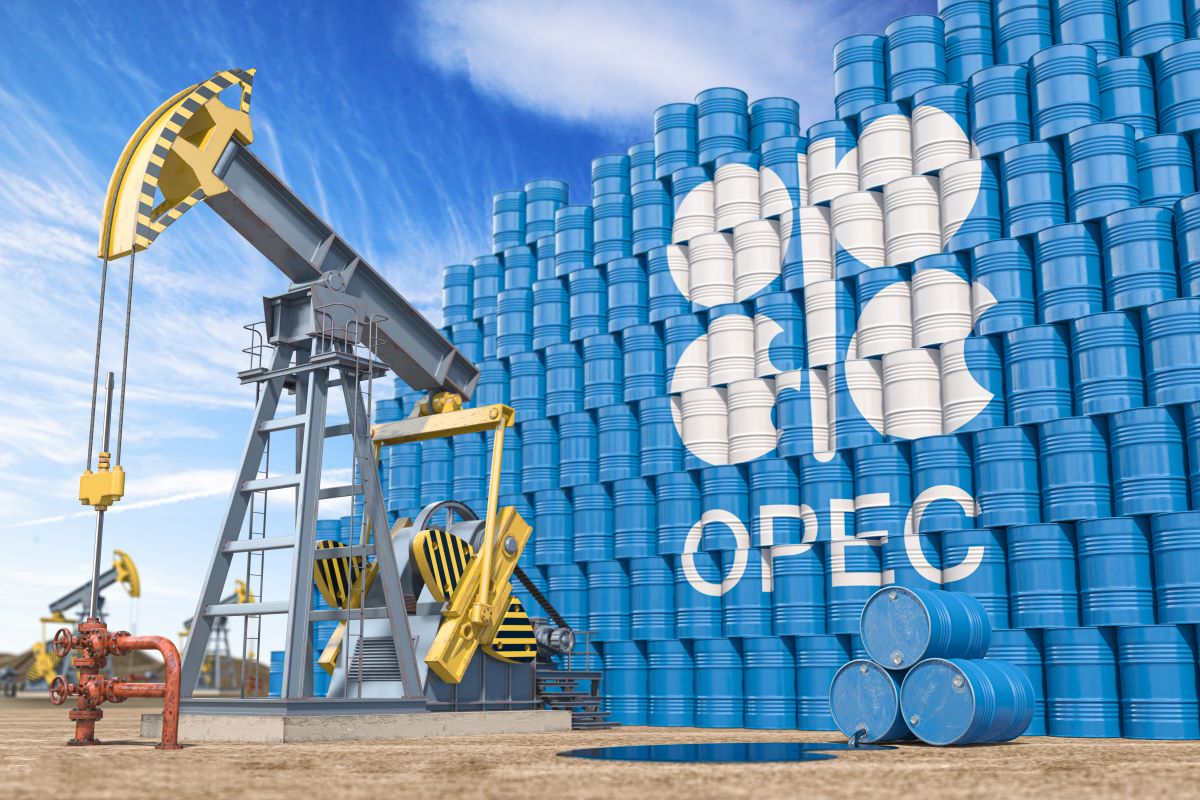ASTANA – The National Bank of Kazakhstan (NBK) has raised the base rate from 16.5% to 18% in October, marking the second sharp monetary tightening this year. The move underscores growing concerns about accelerating inflation and financial stability as the economy continues to face both internal and external pressures. The Astana Times breaks down what the base rate means.
What the base rate means
Andrey Chebotarev, an economist, described the base rate as “the temperature of the entire economy: if you raise it, money becomes more expensive; if you lower it, it becomes cheaper.” Photo credit: Chebotarev’s Instagram page
The base rate, the country’s key interest rate, represents the cost at which commercial banks can borrow from the central bank. It serves as the main benchmark for interest rates on loans and deposits and determines the overall cost of liquidity in the economy.
When the base rate rises, borrowing becomes more expensive, discouraging lending and spending while encouraging savings. Conversely, lowering the rate makes money cheaper, stimulating borrowing and consumption.
According to Andrey Chebotarev, an economist and the founder of Finance.kz Telegram channel, the base rate acts as a “temperature for the entire economy, if you raise it, money becomes more expensive; if you lower it, it becomes cheaper.”
“This is the main instrument of central banks. When a bank issues loans or accepts deposits, it is guided by the base rate. The higher it is, the more profitable it is for people to save rather than spend. Higher deposit and loan rates mean people spend less and save more, which helps reduce inflation,” Chebotarev wrote in his Telegram channel.
What drives base rate decisions
The NBK cited accelerating annual inflation, which reached 12.9% in September, as the main reason for the rate hike. Contributing factors include higher utility tariffs, extensive use of National Fund reserves at the end of 2024 and early 2025, depreciation of the tenge against the U.S. dollar, the strengthening of the Russian ruble, and persistent inflation expectations among both households and businesses.
Chebotarev noted that a higher rate also helps maintain the tenge’s attractiveness to investors.
“When you hear that the National Bank has raised the rate to 18%, it means the country is trying to contain inflation and strengthen financial stability, though at the cost of more expensive loans and slower growth. The higher the cost of borrowing, the slower businesses expand and the economy grows,” he said.
Business analyst Baubek Turekhanov. Photo credit: Turekhanov’s personal archieve
Business analyst Baubek Turekhanov told The Astana Times that Kazakhstan’s inflation rate stems from a combination of domestic and international factors.
“Externally, our northern neighbor has experienced high inflation for two years, and the Central Bank of Russia raised its rate long ago; now they are beginning to lower it. Our southern neighbors have moderate inflation, but it still affects us,” Turekhanov said.
Globally, the NBK monitors commodity prices, inflation in key trading partners, and international monetary conditions. Rising global food and fuel prices or inflation in Russia and China can transmit upward price pressure to Kazakhstan.
On the home front, robust consumer demand, rapid credit expansion, and expansionary fiscal policy remain key inflationary forces.
“Internal factors include the government’s target of 6% annual GDP growth and its commitment to maintaining infrastructure and investment spending. Over the past three years, banks have been expanding lending by more than 20% annually to individuals and businesses. This overheats the economy. Despite high rates, people and companies continue to borrow,” Turekhanov said.
The economic cost of high rates
According to Turekhanov, the high base rate will inevitably slow economic growth.
“There are always two sides, the government and the national bank, and sometimes their positions diverge, as it was in the United States and Türkiye. Turkish President Recep Tayyip Erdoğan’s push to lower rates led to high inflation and currency devaluation. In the U.S., there have also been disagreements between the government and the Federal Reserve over rate policy,” said Turekhanov.
“Higher rates make loans more expensive, which slows construction and banking activity. People start saving more, and growth slows naturally,” he added.
Households face mixed effects. Borrowers struggle with higher mortgage, car loan, and personal loan costs, while savers benefit from higher deposit rates. If inflation slows, households also preserve more of their purchasing power.
Businesses generally bear the brunt of high interest rates in the short term. Costlier borrowing dampens investment and expansion, particularly in credit-dependent sectors such as retail, real estate, and construction. Yet, over time, stable prices and a stronger currency reduce uncertainty, supporting long-term business planning.
Banks, meanwhile, adjust both lending and deposit rates in response to base rate movements, affecting profitability and credit volumes.
Regional context: shared challenges
Kazakhstan’s monetary policy trends mirror those across the region. According to Focus Economics, a company that provides macroeconomic analytics and consensus forecasts for more than 200 countries worldwide, the country’s base rate averaged around 9% in 2019-2020, before rising to 9.75% in 2021 as inflation gained momentum. The NBK hiked aggressively in 2022 to 16.75%, one of the sharpest increases in recent memory, and maintained a tight stance through 2024, when the rate stood at 15.25%.
In the Kyrgyz Republic, the National Bank of the Kyrgyz Republic kept its rate at 4.25% in 2019 amid low inflation. The central bank shifted toward tightening in 2020, lifting the rate to 5% then to 8% in 2021 as inflation exceeded 11%. It continued raising rates through 2022, reaching 13% by year’s end to counter inflationary shocks, which peaked near 14.7% that December. As inflation slowed in 2024, the Kyrgyz central bank began easing, reducing the base rate to 9% by the end of the year.
Russia experienced the region’s sharpest interest rate swings. The Bank of Russia slashed its key rate to a record low of 4.25% in 2020 to support the pandemic-hit economy, but the easing reversed sharply when inflation returned. By early 2022, after the outbreak of the Russia-Ukraine war and a collapse in the ruble, the central bank stunned markets by raising the rate to 20% in an emergency move. It later cut rates as the ruble stabilized, but began tightening again in 2023. By December 2024, Russia’s key rate had surged to 21%, its highest level in a decade.
According to data from the Central Bank of Uzbekistan, the country began 2019 with a 16% policy rate, reflecting efforts to curb inflation. The rate was eased to 14% by 2020 and held steady through 2021 before climbing to 17% in March 2022 to offset external shocks. As inflation slowed, the Central Bank of Uzbekistan reversed course, cutting rates several times to 13.5% by mid-2024, the lowest level in five years.
In contrast, China followed a moderate easing path. The People’s Bank of China kept its one-year Loan Prime Rate (LPR) around 4.15% in 2019, trimming it gradually to 3.85% in 2020 to cushion the economy during the COVID-19 downturn. The LPR continued to fall to 3.65% in 2022 and 3.45% in 2023 as authorities sought to spur lending amid sluggish demand and near-zero inflation. By late 2024, it reached 3.1%, the lowest level in years.
Turekhanov noted that Kazakhstan’s policy often lags slightly behind Russia’s moves.
“Russia has kept the ruble stable at around 80 per dollar for a long time. Kazakhstan can’t sustain a strong tenge that way because of a budget deficit – expenses exceed revenues. We tend to let the tenge depreciate, which fuels inflation since our economy depends heavily on imports. It becomes a vicious circle: weak exchange rate, high inflation, high interest rates, and dependence on oil prices,” he said.
To reduce reliance on rate hikes, Turekhanov suggested a set of long-term reforms.
“We need to attract investments, industrialize and create domestic production, cut intermediaries between producers and consumers, tighten customs control, fight corruption, and improve tax collection. Diversifying the economy away from oil and strengthening local manufacturing are key steps. Only then can we sustainably lower the base rate to around 12%,” said Turekhanov.
The next decision on the base rate will be announced on Nov. 28.





